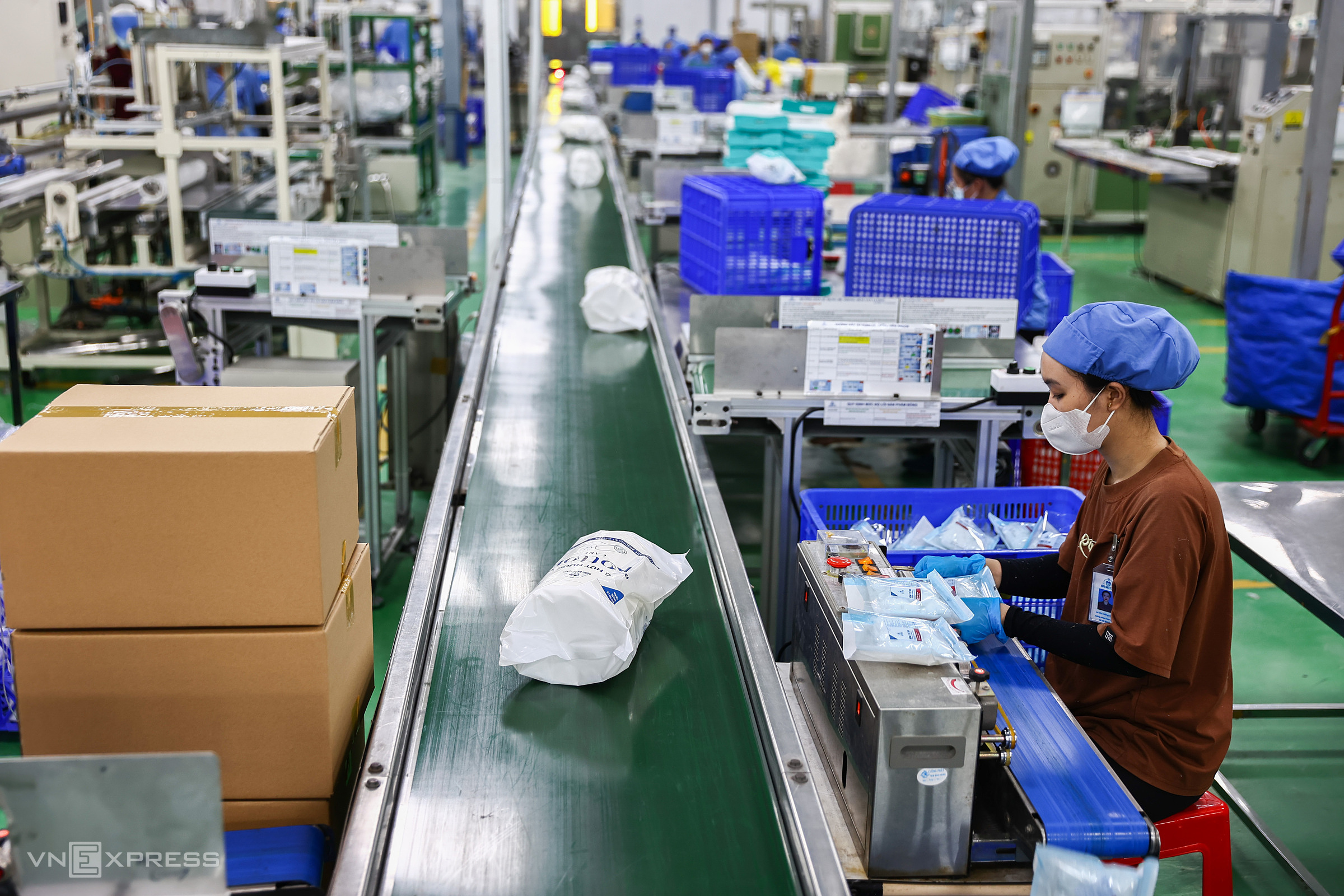The purchasing managers' index (PMI) for Vietnam's manufacturing sector reached 50.4 in August, according to a new survey released by S&P Global. This marks the second consecutive month the PMI has remained above 50, indicating expansion.
The US data analysis firm highlighted the positive trend of production output increasing for the fourth consecutive month. Andrew Harker, Economics Director at S&P Global Market Intelligence, noted that companies are more confident in the outlook for the next year, partly based on hopes of increased demand.
"With the tariff roadmap appearing more stable, there is hope that demand improvements will materialize in the coming months, thereby helping to sustain output growth in the manufacturing sector," he said.
 |
Workers at a Bong Bach Tuyet manufacturing plant. Photo: Quynh Tran |
Workers at a Bong Bach Tuyet manufacturing plant. Photo: Quynh Tran
Production and export data recently released by the Ho Chi Minh City Statistics Office also recorded positive growth. The industrial production index (IIP) in August increased by 10.2% compared to the same period in 2024. Over the first 8 months, the IIP increased by 6%. The processing and manufacturing industry continues to be the main driver of industrial growth, increasing by 10.1%.
After its merger, Ho Chi Minh City became a major industrial center with three key sectors: processing and manufacturing, high technology, and energy. It also accounts for more than 23% of the country's total exports. In the past 8 months, this economic hub exported over 61 billion USD worth of goods, a 6.4% increase. Conversely, imports increased by 9%, reaching nearly 65.7 billion USD, suggesting that businesses are expanding their purchases of inputs for future production.
However, certain challenges remain. Harker noted a decrease in new orders, partly due to the impact of tariffs. In addition, some companies faced shortages of raw materials, and input costs last month saw their sharpest increase since the beginning of the year.
At a seminar on US trade policy late last month, experts expressed optimism about US market demand for certain billion-dollar goods, such as wood products and textiles. However, they recommended that manufacturers diversify into two other top markets: Europe and China.
Professor Nguyen Duc Khuong, CEO of Leonard de Vinci Business School and President of the global Vietnamese intellectual network AVSE Global, assessed that Vietnamese businesses have effectively utilized the EVFTA (EU-Vietnam Free Trade Agreement).
In the first half of the year, exports to the EU increased by about 10%. Therefore, it is necessary to continue taking advantage of opportunities in this market. Meanwhile, China is the world's largest market in terms of purchasing power parity and is close to Vietnam, offering logistical advantages. "This is a very dynamic market with the highest growth rate," he said, highlighting its potential.
Vien Thong












